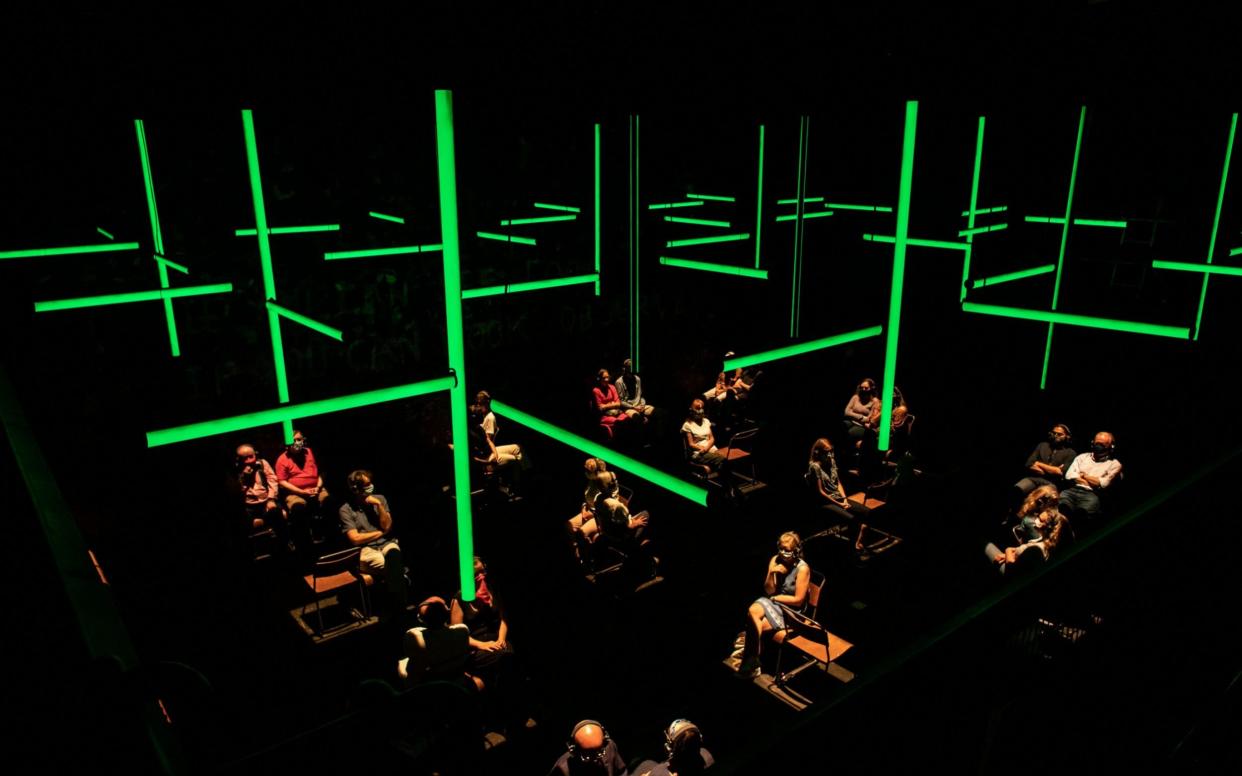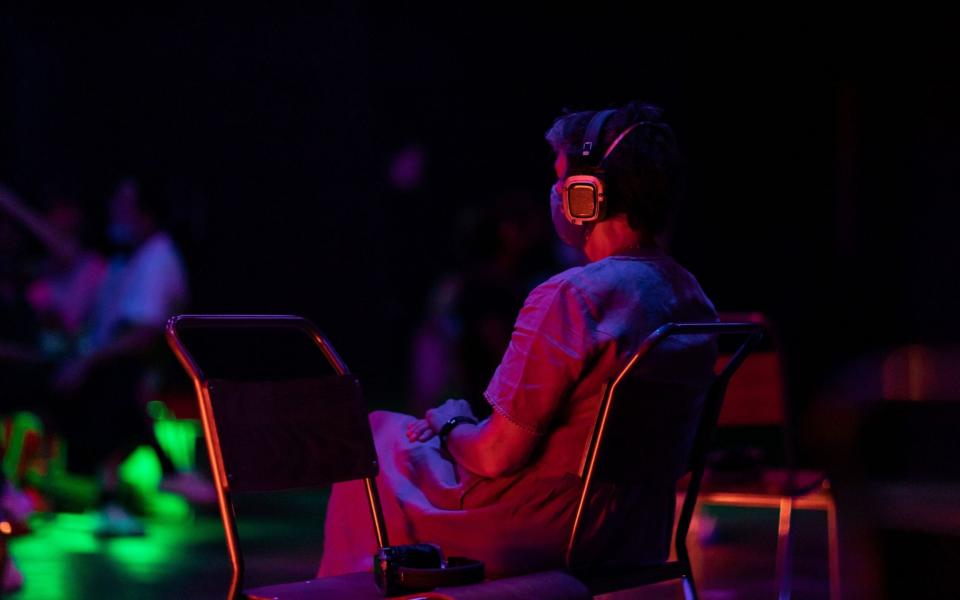Blindness, Donmar Warehouse, review: indoor theatre returns with a visceral sound installation

Why on a sweltering August afternoon would anyone hasten into a theatre, there to undergo an hour-long mainly auditory experience, primarily in complete darkness and compulsorily with a face-mask?
In a way, the answer is blindingly obvious: theatreland remains a wasteland – and those who miss the art-form will fall on any scrap of activity like ravening stray dogs. The Donmar has been laudably canny in reopening within the fiendish current guidelines which state that indoor venues can open but only without ‘performances’ and with social distancing. So this marks a major first.
In inviting up to 40 people a session – four times a day – to experience “a sound installation”, with a recorded narration by Juliet Stevenson, the off-West End powerhouse is providing the chance to step back inside, hear a familiar voice and obtain some reassurance that there’s light at the end of the tunnel. Offering more than the mere theatrical basics, though, the ambition here is to be artistically and technologically pioneering – using ‘binaural’ recording techniques that tip the headphone-wearing audience into a plunge-tank of immersive sound.
Blindness (1995) – by the Portuguese novelist José Saramago (1922-2010) – could hardly be a more bleakly topical choice, describing society succumbing to civic collapse as a mysterious epidemic of blindness gathers force. Given the all-consuming nature of our current pandemic, is there a risk here of viral overload?
Yes. But the value of the piece is that it propels us into the heart of Saramago’s dystopian vision for long enough to realise that even if we’ve avoided the civilisational collapse he envisages, we have been inhabiting a similar realm of nightmares. Walter Meierjohann’s ingenious production engulfs us in darkness, creating a correlative to the affliction that proliferates with terrifying rapidity from a single case of a driver going blind at a set of traffic-lights. At the same time it viscerally illustrates how a state of disorientation and distress can bring out something unexpected in us.

Amid an emptied, eerily reconfigured auditorium and stage, the usual seating stashed away, the participants are ranged in paired wooden chairs under vertical and horizontal lighting rods; these glow in various hues, throb, flicker, pulsate and eventually fade – aside from the odd retina-searing recurrence – into extinction.
It’s a truism to say that our hearing becomes more sensitised when we’re ‘deprived’ of sight but, thanks to the finesse of sound designers Ben and Max Ringham, that’s demonstrated to a startling degree. The effects are so pin-sharp it’s almost impossible not to swivel or shift in response to every footstep, scrape of a chair, rumble and jolting noise. Stevenson relays the story with her usual impeccable verbal poise but she also takes us into the breathy, by turns panicked and whispery confidence of the primary character and the only one who remains sighted: the wife of a doctor blinded early on in the contagion.
This de facto seer becomes the saviour of the increasingly anarchic asylum where the first wave of quarantined victims are held, wrangling with guards for food, lamenting the sanitation (the buzz of flies accentuates the squalor) and so on. The dialogue has been truncated so that her exchanges sound one-sided (almost a deficiency, though overall adaptor Simon Stephens gives Saramago’s prolix style a welcome succinctness). In terms of the dramatic journey, however, it’s a two-way process – the audience is integral: we picture the scene in our mind’s eye and as we sit there, helpless, we’re not only conscious of our isolation but of our inner resources, developing an immunity to the intimidating situation (into which light and hope will gradually return).
Stevenson has indicated that she would like to undertake the performance in person when circumstances finally permit it. But she’ll never give a more intimate or head-space-invading account of it – even though she’s obviously absent, those headphones make her presence feel palpable. And compared to the self-consciously arty 2008 film starring Julianne Moore, this incarnation feels acutely resonant. Surveying the ‘new normal’ of the masked audience I realised how much has changed since theatres closed on March 16th. And as I emerged into Covent Garden at twilight, it hit me that it wasn’t just the show we had made it through together, but something much bigger.
Until Aug 22; Tickets: 020 3282 3808; or online


